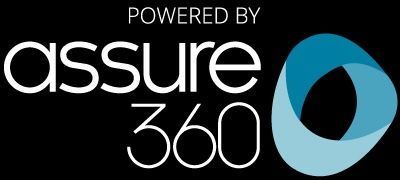Risk Assessment Basics: How To Conduct & Apply The Findings
This guide outlines the basic steps for conducting a risk assessment and applying its findings to reduce risks effectively.

Risk assessment is a systematic process used to identify, evaluate, and manage risks associated with specific activities or processes. It's an essential part of any health and safety strategy, enabling organisations to protect their employees, customers, and the public.
Step 1: Identify the Hazards
The first step in any risk assessment is to identify the potential hazards within the workplace or during specific work activities. Hazards can be anything that may cause harm, such as chemicals, electricity, working at height, or even manual handling. Methods to identify hazards include:
- Walking around the workplace and observing the activities and processes.
- Consulting employees and involving them in the identification process, as they might have noticed risks not immediately apparent.
- Reviewing accident and near-miss records to identify previously encountered hazards.
- Considering long-term hazards to health, such as high noise levels or exposure to harmful substances.
Step 2: Decide Who Might Be Harmed and How
Once you've identified the hazards, you need to understand who might be harmed and how. This includes employees, contractors, visitors, or any other people who might be affected by your activities. Consider the level of risk for different groups, such as people with disabilities, pregnant women, or young workers who might be at greater risk in certain situations.
Step 3: Evaluate the Risks and Decide on Precautions
After identifying the hazards and deciding who might be harmed and how, you need to evaluate the risks. This means considering the likelihood of the harm occurring and the severity of the consequences if it does. With this information, you can then decide on the appropriate precautions to reduce or eliminate the risk. This stage involves:
- Comparing current practices with best practices or legal standards to see if more can be done.
- Prioritising risks based on their severity and likelihood of occurrence.
- Implementing the hierarchy of control measures to eliminate hazards or reduce risks, starting with more effective controls like elimination or substitution, and moving to less effective controls like personal protective equipment (PPE) as a last resort.
Step 4: Record Your Findings and Implement Them
Recording the findings of your risk assessment is crucial. It demonstrates that you've identified the hazards, decided who could be harmed and how, and taken steps to mitigate the risks. Your record should include details of:
- Any hazards identified.
- The associated risks and their severity.
- The control measures put in place to manage these risks.
After documenting your findings, the next step is to implement the control measures you've identified. This may involve making changes to working practices, investing in new equipment, providing training for staff, or a combination of these and other measures.
Step 5: Review Your Assessment and Update if Necessary
Risks change over time, so it's essential to regularly review and update your risk assessment. This ensures that any new hazards are identified and managed promptly. Reviews should occur annually or whenever significant changes to the workplace or working practices occur. Factors prompting a review include:
- Changes in equipment or materials used.
- Alterations to the work environment or processes.
- Following an incident or near miss.
- Feedback from employees or others affected by your activities.
Applying the Findings
Effectively applying the findings of a risk assessment is key to reducing workplace risks. This involves:
- Communicating the results to all affected parties, ensuring they understand the risks and the measures in place to control them.
- Training employees on new procedures, the correct use of equipment, or the use of personal protective equipment (PPE).
- Monitoring and reviewing the effectiveness of the control measures to ensure they remain effective and making adjustments as needed.
- Encouraging a culture of safety where employees feel empowered to report hazards and suggest improvements.
Conclusion
Conducting and applying the findings of risk assessments are critical components of workplace safety and health management. By systematically identifying hazards, evaluating risks, and implementing effective control measures, organisations can significantly reduce the likelihood of accidents and ill health. Remember, risk assessment is an ongoing process that requires regular review and adjustment to be effective. Engaging employees in this process not only helps to identify risks more accurately but also promotes a culture of safety and teamwork.









